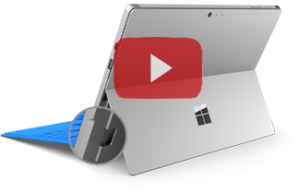Surface Pro 3 Micro Sd Slot Location 3,1/5 8054 votes
Does Surface Pro X have an SD card slot?
- Surface Pro 3 Microsd Slot Location, chief engineer casino, gambling age in oregon, fiesta casino alajuela prostitutes.
- The 15-inch Surface Laptop 3 is the first one to have a 15-inch screen and an AMD processor. But despite those changes, it’s an extremely similar laptop to its smaller siblings.
Browse the top-ranked list of Microsd For Surface Pro 3 below along with associated reviews and opinions. SanDisk - Extreme PLUS 32GB microSDHC UHS-I Memory Card. Model: SDSQXSG-032G-ANCMA. Rating 4.8 out of 5.
Surface Pro 4 Sd Card Slot
No, it doesn’t. Unlike traditional Surface Pro, Surface Pro X doesn’t have a MicroSD card slot. However in return, it comes with a removable SSD hard drive, so you can easily swap it for a bigger one when needed.

For more information, check out the full Surface Pro X specifications here.
Related Questions
Here are the latest related questions:
Best Accessories for Microsoft Surface
With the right set of accessories, you can boost your Surface's productivity to the next level. Here we have some of the best accessories you should get for your Surface devices.
Those are the top must-have accessories for Microsoft Surface devices so far. With Surface Pen, Surface Dock, Surface Precision Mouse, and microSD card will significantly increase your Surface performance, storage, and productivity.

More on Surface Pro X
Here are all recent related articles you might want to check out:


Your Surface does a remarkable job of backing itself up. For example, your Microsoft account remembers how you personalize your Surface, as well as the settings you change. It also remembers your e-mail accounts, calendar information, contacts, favorite websites, and even many of your passwords.
Aided by your Microsoft account, the Windows Store remembers the apps you’ve installed and purchased, making it easy to download them again. Any files you store on OneDrive are backed up there.
So, what’s left to back up? Well, it’s the files stored in your Windows main folders: Documents, Music, Pictures, and Videos. Your Surface’s built-in File History program can back those up, but there’s a catch: Microsoft didn’t turn on File History by default.
Microsoft Surface Sd Card Slot
To turn on the File History backup program, you need to choose a backup location and tap the program’s On switch by following these steps:
Insert your memory card into your Surface’s memory card slot, or plug a portable hard drive into your Surface’s USB port.
If you prefer to back up your Surface to a wireless network location (perhaps a shared folder on another PC), you can do that in Step 3.
Visit the PC Settings’ File History category.
Fetch the Charms bar by sliding your finger inward from the screen’s right edge and then tapping the Search pane’s Settings icon.
Type File History into the Search box and then tap the File History Settings link.
The File History settings page appears. File History quickly looks for any available drives and lists the most promising candidate (the largest available drive). If you haven’t plugged any drives into your Surface’s USB port, File History recommends your memory card as a backup location.
Choose your backup drive and tap the Turn On toggle switch.
If you’re backing up to your memory card — and that’s the only available backup spot available — tap the Turn On toggle switch, and you’re through. Your Surface starts backing up your files on the memory card. File History refers to the memory card as “Removable Disk (D:).”
But if you want to back up to a different drive, tap the Select a Different Drive link. A pop-up menu appears, listing all the drives available to your Surface. Choose your drive’s name from the pop-up menu, tap File History’s On/Off toggle switch to On, and you’re done.
If you want to back up to a network location, tap the Select a Different Drive link. When the pop-up menu appears, choose Show All Network Locations at the bottom of the pop-up menu. When your list of network locations appears, tap the one you want and tap the program’s On/Off toggle switch to On. Whew!
Surface 3 Micro Sd Card
After you’ve chosen the backup location and turned on File History, your Surface backs up your files every hour.
If you’re using a portable drive, store it in a safe, yet convenient, place. You must remember to reconnect it often so your Surface can create another, more-recent backup.
To view your backups, open the Desktop app, tap the Charms bar’s Settings icon, and tap Control Panel from the top of the Settings pane. When the Control Panel appears, open the System and Security section and tap File History.